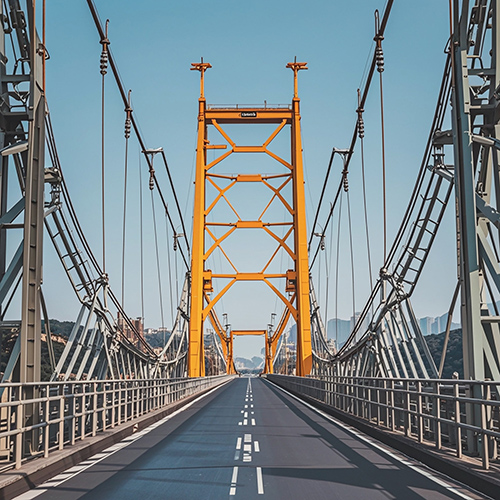The Steel Suspension Bridge: A Marvel of Engineering
Steel suspension bridges are among the most remarkable feats of engineering in the modern world. These structures not only serve as vital transportation links but also stand as symbols of human ingenuity and technological advancement.
One of the most prominent features of a steel suspension bridge is its impressive span. With the ability to cross vast distances, these bridges can connect areas that would otherwise be difficult to access. The long spans are made possible by the unique design that utilizes strong steel cables suspended from towers. These cables bear the weight of the bridge deck and transfer it to the towers and anchorages, allowing for a graceful and efficient structure that can cover great lengths without the need for numerous intermediate supports.
The use of steel in these bridges is another key feature. Steel is known for its high strength-to-weight ratio, making it an ideal material for constructing long-span bridges. It can withstand heavy loads, including the weight of vehicles, pedestrians, and wind and seismic forces. The durability of steel also ensures that these bridges can have a long service life with proper maintenance.
Aesthetics is also a significant aspect of steel suspension bridges. Their sleek and elegant designs often become iconic landmarks in a city or region. The combination of steel cables, towers, and the suspended deck creates a visually appealing structure that can enhance the beauty of the surrounding landscape. Whether lit up at night or standing majestically against a natural backdrop, steel suspension bridges are a sight to behold.
The stability of these bridges is achieved through careful engineering. The towers are designed to resist the forces exerted by the cables and the weight of the bridge. The anchorages at either end of the bridge securely hold the cables in place, ensuring that the bridge remains stable even in adverse weather conditions. Wind engineering is also a crucial consideration, as these bridges are often exposed to strong winds. Special measures are taken to minimize the effects of wind on the bridge, such as aerodynamic shaping of the deck and the use of wind dampers.
In addition to their transportation function, steel suspension bridges can also have a positive impact on the economy. They facilitate the movement of people and goods, promoting trade and economic development. They can also attract tourists, boosting the local tourism industry and generating revenue.
In conclusion, steel suspension bridges are remarkable structures with a host of impressive features. Their long spans, use of steel, aesthetic appeal, stability, and economic significance make them an essential part of modern infrastructure. As technology continues to advance, we can expect even more innovative designs and improvements in the construction of steel suspension bridges, further enhancing their role in connecting communities and driving economic growth.








 Certified
Certified


